Thinking of planning a RTW trip and adding Cuba to the itinerary? Don’t know where to start? Sign up today for Plan Your RTW Trip in 30 Days and start receiving email lesson plans tomorrow – it’s free! You’ll be on the road before you know it!
![]()
There’s something to be said about the road less traveled. And I certainly did that as I turned a quick 90-mile journey from Miami to Cuba into a trip of over 4,000 miles. Was it worth it? Absolutely.
As I uncover the secret of travel to Cuba for Americans, I’ll share with you how you can do it legally as well as under the radar, which I like to call My Way. Plus, I’ll highlight some of Cuba’s excellent food, drink, must-sees, and experiences.
First and foremost, I must say that since my return, I have received so many blank faces when I mentioned I traveled to Cuba to celebrate the New Year. I didn’t know it prior, but most Americans are oblivious to the fact that travel to Cuba is difficult and highly restricted. Unless you are in the know, the press, politicians, and government have done an excellent job in keeping Americans unaware of this gem of the Caribbean. If you are like the majority, you don’t hear much about Cuba unless it has to do with the health of the Fidel Castro or a hurricane fast approaching. Am I right?
So why do so many Americans stay at home with such a beautiful, spirited country only 90 miles off its shores? Let me explain the basics. Then you can decide your route to Cuba.
Legal travel to Cuba – The basics

The Cuban government does not prohibit travel to Cuba by Americans; nor it is illegal for an American to travel to Cuba with a license from the U.S. government. However, legal travel directly from the United States is limited. You need to fall into one of two groups or choose the recent “People to People” travel option. All are explained below:
1) License waived because you are:
- A professional journalist on assignment
- A full-time academic or research professional
- A person on official government business
2) Need to apply for a specific license with the U.S. Department of the Treasury Office of Foreign Assets Control because you are:
- A person visiting immediate family
- A full-time graduate student conducting academic research to be counted toward a graduate degree, an undergraduate or graduate student participating in a study aboard program of at least 10 weeks in length, a professor/teacher employed at a US institution traveling to Cuba to teach
- A person engaging in religious activities, humanitarian projects, non-profit cultural exhibitions
- A freelance journalist
3) New “People to People” travel option
President Obama recently opened the “People to People” travel option to Americans. It’s available to Americans who don’t qualify for the other two options and wish to visit Cuba as tourists. In order to take advantage of this type of travel, Americans must go with a licensed tour operator with a cultural exchange program. These programs are full-time with a 40 hours a week schedule full of historical, religious, and cultural education.
[social]
What does this mean?
As an American, you can travel to Cuba, but you need to fit into pretty stringent qualifiers, wait patiently for licenses from the U.S. Department of Treasury, or go with one of the licensed tour operators that book up quickly, charge a pretty penny, and make your dreams of relaxing with mojitos and cigars at the beach nearly impossible with the full-time schedule of cultural exchange that the tours must follow.
How I did it My Way

I didn’t qualify for the first option of travel. However, I could have chosen the second option, as I’m a freelance journalist. The catch was that I didn’t have the time to file with the government. I wanted to go for the ringing in of the New Year, which was in little under a week and a half. In order to cover all of my bases, I tried a few licensed tour operators. Unfortunately or fortunately, those that I contacted were all booked. So I needed another option, which required more research and a little bit of creativity.
I started my investigation by contacting various tour operators in Cuba in addition to scouring the web for tips of how to accomplish such a trip. In a matter of a day, I found out that my only option, given my time constraints, was to go through a third country. Although it would have been easier to choose flights from Miami to the Bahamas and then to Cuba, I selected to work with an eco-tourism company in Havana who would provide housing, transport, and excursions while in Cuba as well as an introduction to a Mexican tour operator that could facilitate the purchase of the two separate roundtrip tickets from Miami to Mexico City and then from Mexico City to Havana.
Within a total of two days, I had money wired to the tour operator in Mexico with confirmation that my tickets were purchased. I also nailed down a four-day itinerary with the Cuban tour operator allowing me time to enjoy Havana, hike and swim in Las Terrazas, sunbathe at Varadero’s beach, dance salsa, and stay with local families. The My Way trip to Cuba was underway.
Next I had to prepare for money. As the embargo prohibits Americans spending money in Cuba, using a credit or debit card from an American bank isn’t going to work. That means you need cash. Unlike other trips abroad, I didn’t bring much US currency because I found out that dollars are subject to an extra 10% at the Cuban exchange services. So I set out to get a combination of Mexican Pesos and Euros. I have to admit; this trip preparation took me back over a decade ago where cellphones, ATMs, and Internet were not ubiquitous. Back then and yet again in Cuba, I had cash hidden in various shoes, a money belt, and other top-secret places.
Getting into Cuba
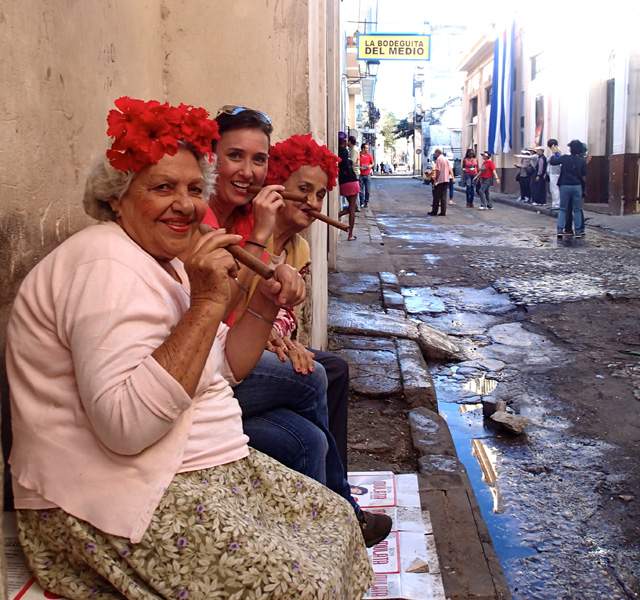
Whether you go My Way from Miami to Mexico City to Havana or another route, you will need to show valid international health insurance or purchase it in the Havana airport. As Cuba is known for its healthcare, the government is very careful to allow anyone into the country who doesn’t have coverage. Although I have coverage in the US, my plan is only accepted domestically. If you’re in the same situation, don’t worry; in the very same room as immigration, you can quickly arrange for health insurance for your stay in Cuba. The charge was minimal at roughly $3 USD per day. I received a small piece of paper and proceeded to the immigration line. The official did not stamp my passport, but she did stamp the visa that I would show upon exiting Cuba.
After passing immigration, there are various checkpoints at which numerous guards and officials questioned me as to what was my purpose in Cuba, where I was staying, and if I was bringing credit cards. As I speak Spanish, the interview process was easy enough to explain that I was a freelance writer coming for an educational and research trip.
Although it shouldn’t have mattered to the Cuban officials if my trip was educational or for R&R, the questioning continued. I found out that they were more concerned that I had already arranged housing, which they wrote down and investigated. They also asked if I had large camera equipment; I imagine this was for political reasons. Finally, before letting me proceed, they asked if I brought my credit card. I said I did not as I knew it would not work. They then asked how much money I brought with me to Cuba; I fibbed.
Once through immigration, I proceeded to exchange my Pesos and Euros into CUC, which is the currency of tourists. This is not to be confused with the national currency is CUP. In fact, you may not even see CUP in a tourist visit. I did not.
How to exit Cuba, enter Mexico, and enter the US
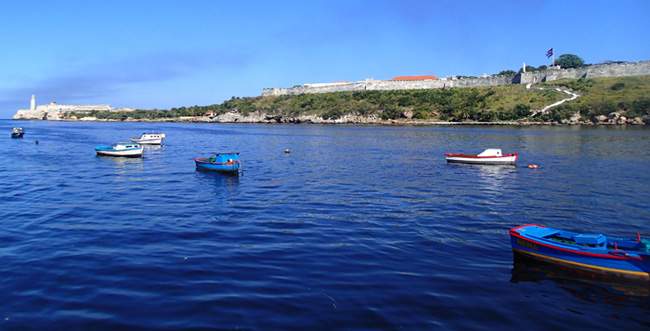
Exiting Cuba is rather easy. During your stay in Cuba, you will be presented with many items that you would like to purchase; however, if you choose a route to Cuba without a license, it is in your best interest not to purchase anything as proof that you were in Cuba. As a reminder, you can’t mail postcards or purchases to the U.S., you will need to wait until a future visit or hit Calle Ocho in Miami.
Once you arrive at the airport in Havana, you will go through your check-in process, pay an export tax, and exit through security and immigration. You will get your visa stamped, which they will keep, and your passport remains without Cuban evidence. When you enter Mexico, despite what other people say and suggest, the immigration officials will stamp your passport even if you ask them nicely not to and have a cute smile. So I would suggest that you be well traveled with a very decorated passport in order to do the double entry stamp through Mexico. I had a quick trip so two stamps within a short time period was a little questionable; however, I have dozens of stamps and visas cluttering up my passport. Conveniently, my second stamp was on my final page and covered by an existing visa from another trip.
To eliminate the double entry stamp, when I do this again, I will do one of two things. I would go for a much longer time period so that I could justify two stamps into Mexico spaced out by weeks or a month. Otherwise, I would fly to Guatemala and continue to Havana with a return from Havana to Mexico, which would eliminate the double stamp.
Regardless of how you do it, when you arrive to the United States, you will want to put on your poker face. You were traveling to Mexico or whatever country you choose for pleasure. Additionally, as a precaution, I would make sure that you don’t have anything that would be incriminating on you (like Cuban souvenirs). I would go so far as to hide all of those camera memory cards that have you in Old Havana in the Hemingway Hangout with a mojito or at Revolution Square with Che and the Cuban flag in the background.
What could happen if caught?
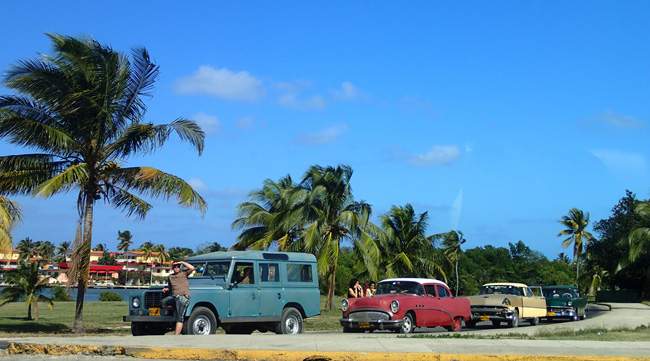
US citizens caught traveling to Cuba without a license are not denied re-entry to the US. However, they may be subject to civil penalties of several thousand dollars and/or criminal prosecution. The most important part of this is to do everything to not be caught – go through one or two other countries, bring back no evidence, and have a well-traveled passport when you do it. And if caught, do not incriminate yourself further by lying. Remember the Fifth Amendment.
Whatever the case, Cuba is absolutely a spectacular place. It is impressive that it has survived without any assistance from the US over the last fifty-four years. I did not know that I would be in Cuba on the anniversary of the revolution, which is New Year’s Eve. I certainly appreciated seeing the Plaza of the Revolution, the only form of billboard advertisements from the government, and getting some feedback from the Cubans about their hopes for open trade and more American tourism.
It was an eye-opening experience to see such happiness in a culture that in comparison to mine has so little. With that said, there is a very important life lesson to be learned. Perhaps only having the essentials has led to the long, happy lives that I saw first-hand. I still remember seeing a ninety-year-old man dancing across the floor mid-morning before I hiked in Las Terrazas. Later that evening, I met him, as he was my host. He was the owner of the home that I was staying in. Perhaps dancing every morning to salsa in a rural community, having a Cuban coffee to start, and enjoying some rum throughout the day is the answer. He seemed to be doing better than just OK. I would have to say that he had more spring in his step than many of my peers.
Here’s to uncovering more of Cuba’s secrets! Salud (with a Cuba Libre in hand of course)!
Travel Resources
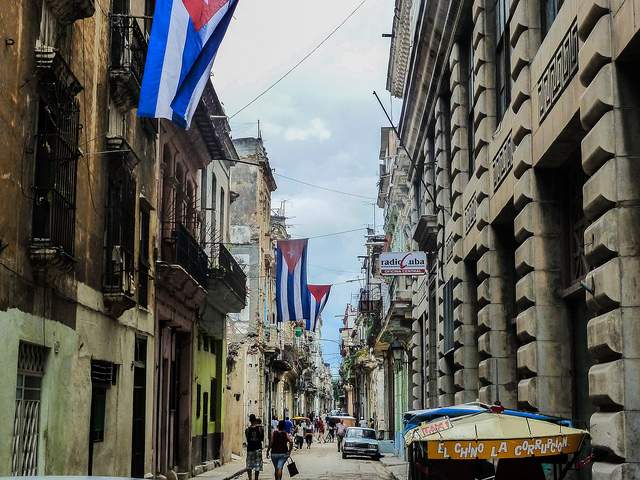
Havana
- Fort and Cañonazo – Upon landing in Havana, I dropped off my things at my casa particular to only be whisked off to the Fort of Havana. Within a half an hour of landing, I was at Havana’s Fort witnessing the Cañonazo (firing of canons). It just so happens that each night at exactly nine o’clock they reenact the ritual of hundreds of years ago. At the time, the firing of canons signified that the city and its walls were closing. The actors and costumes donned white wigs and military uniforms to look the part. On any night of the week, the Fort is the best people watching with a parade of beautiful 1950’s cars of all colors outside that are primarily taxis to take both locals and visitors home.
- Old Havana Cigars & La Bodeguita – Just like many ports around the world, Havana’s buildings are colorful; granted some lack years if not decades of attention, but the architecture is striking with wrought iron details, beautiful windowsills, and impressive archways. Take a taxi or another popular local transport, the bici-taxi, which I nicknamed the “suicide taxi” to near the port. Once there get out and walk the narrow streets of Old Havana and make sure to make the rounds and stop at one of the four plazas. You will see various women selling cigars as well as men selling fedora hats. Do stop to take in Hemingway’s Old Havana hangout La Bodeguita and have something with the national drink, rum. I like Cuba Libres, but if a refreshing mojito with lime and mint is more up your alley. Dale!
- Revolution Square – If you don’t see enough political propaganda on the only permitted billboards in Cuba, on t-shirts, or even in people’s living rooms, you can step into Revolution Square. This is where some of the most important announcements of the Revolution took place. If you didn’t realize it previously, Che was and continues to continue to be a hero as seen from the building size portrait at the square and on all of government propaganda.
- Taxi ride in an old car – The phrase ‘pimp my ride’ takes a whole other meaning in Cuba. It is the norm to have a 1950’s Chevy, Buick, or other in wild colors like purple, pink, bright green, or let your imagination run wild. It is like you have taken the DeLorean back in time just like Back to the Future. What I found was interesting is that many of the taxis in Cuba are shared taxis. These taxis are going in the same general direction. You will see people hailing a cab and join existing passengers.
- I would note that you need to watch out as all modes of transportation from buses, semis, motorcycles, horse and buggy, bicycles, and taxis all use the same narrow, rough roads peppered with potholes. It is common that in order to pass a slower moving vehicle a simple ‘beep beep’ signifies a polite get out of the way and move to the shoulder.
- Nature Hike through Pinar del Rio – Do a little hiking in Pinar del Rio and if you get lucky you will see the Tocororo, the national bird. It is ironically just like the Cuban national flag with perfectly patterned reds, whites, and blues.
Varadero
It is no wonder that Americans flocked to Cuba in the 1950’s. It was the Las Vegas of the Caribbean before we even knew what Las Vegas was or would become. However, one of the invaluable assets of Cuba is its coastline. The beaches are powdery, white with gentle turquoise waters found only in the Caribbean. Talk about a paradise.
Whether you are driving or riding to or from Havana, do not forget to stop in Matanzas at the bridge and overlook. There is a small outside bar that serves the absolutely best piña coladas I have ever tasted. In fact, you can’t even use a straw. They have so much natural pineapple and coconut, you almost have to eat them. Que rico!
Eating and drinking in Cuba
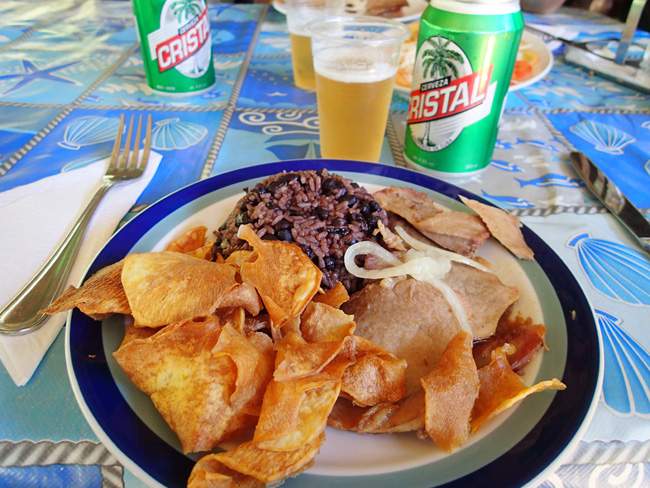
- Cuban coffee – I like my coffee strong. This is the country for strong, small shots of coffee. If you don’t want sugar, too bad. You’re going to get it. And, in this culture there is no rush. There is always time for coffee as well as what I like to call the Cuban national pastime, people watching or watching the world go by.
- Cuba Libre – The typical Rum and Coke with a lime. It is the national drink. It never tasted better than overlooking the Morro of Havana. Prices ranged from 3-5 CUC.
- Crystal – A light Cuban beer best served cold with roasted pork, rice, and beans. Prices are very cheap. Don’t pay more than 1-2 CUC.
- Roasted pork on the BBQ – Over a fire with palm frowns or other to naturally smoke the pork and slow cook it to fall off the bone. Prices were very reasonable which typically included beverage, full meal, dessert, and coffee for on average 10 CUC.
- Mojitos – Light, refreshing mint, sugar, and lime cocktails. Prices vary, but had 3-5 CUC prices even in touristy areas.
- Ice cream – Dulce de Leche – The best ice cream to date. I thought Buenos Aires was the winner. I have to place Buenos Aires as second.
- Cigars – When in Rome, do as the Romans. When in Havana, take your time and people watch, while smoking a Cuban and perhaps drinking a coffee, mojito, or Cuba Libre. Sorry beer commercials, it doesn’t get better than this. Cigars start as low as 3-4 CUC. Remember you can’t bring them back with you.
Tour Operators
- Ecotur Cuba – Provided transport to and from airport, guide through hiking, beaching, educational tour of fort and Old Havana, and housing with local Casa Particulares
- Multicolor Travel – Provided the roundtrip airfare with Interjet, visa, and logistics from United States to Mexico and on to Cuba
Accommodations
- Hotel La Moka in Las Terrazas in Pinar del Rio
- Casa Particular Alberto y Angelica Calle 196 Nro. 116A; Phone: (537) 2712917
- Hotel Nacional de Cuba – Iconic hotel right on the bay of Havana that has a hall of history showing some of the best of the 1900’s-present artists, actors, and musicians that have visited the Hotel Nacional
Flights
You can use Indie to plan your flights to and from Mexico City or whatever city you go through before going to Cuba. However, you cannot use Indie to book your flights to Cuba, so you will have to look through other avenues and not use a United States based airline or website.
Estimated Costs
Note: Costs are based on the author’s trip to Cuba in December 2012/January 2013
- Airfare with 2 separate roundtrip tickets Miami to Mexico City and Mexico City to Havana costs roughly $800. The holiday and New Year are peak times. At other seasons the costs may be cheaper.
- Casa particulares, which are independent homes open for travelers, are very inexpensive. You can receive an independent room with bathroom and breakfast for 30-40 CUC a night.
- Hiking tour of Terrazas, breakfast, lunch, dinner, night in Hotel Moka, and private transportation with Ecotur cost for 2 days $300
- Tour of Matanzas and Varadero, breakfast, lunch, and private transportation for 1 day $125
- Tour of Old Havana (day), Fort (night), Dinner, and private transportation over 2 days $125
- Other spending: Visa in Mexico to enter Cuba $20; $25 CUC upon exiting Cuba, Health insurance is $3 per day of stay.
For more on traveling to Cuba, read:
- Ten Places You Can Drink Like Your Favorite Writer
- 10 Difficult to Visit Places and How to Get There
- Top 10 Destinations for Indie Travelers in 2012
- Stay tuned for our article on Thursday – Indie Travel in Cuba for $75 Per Day – to find out more practical details of what to do in Cuba and how much it will cost to travel there.
To read more from Heidi, check out her author bio.
Photo credits: Nathan Laurell, all other photos courtesy of the author and may not be used without permission.
